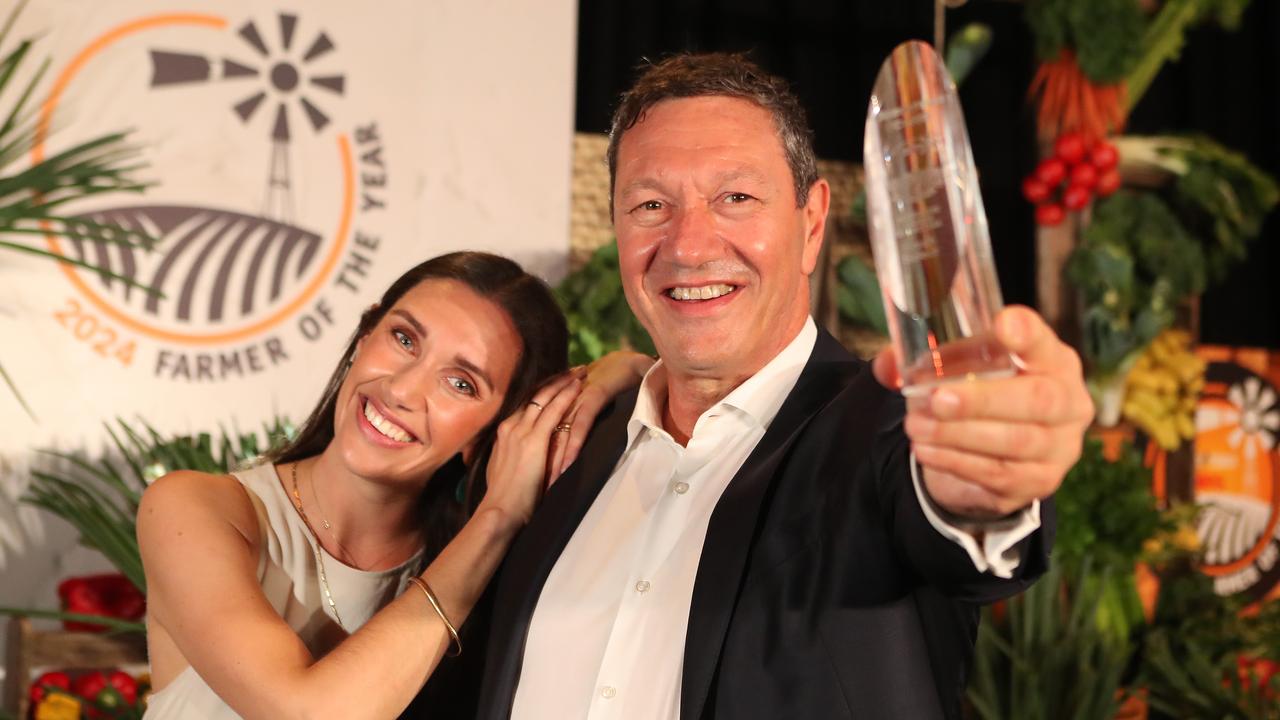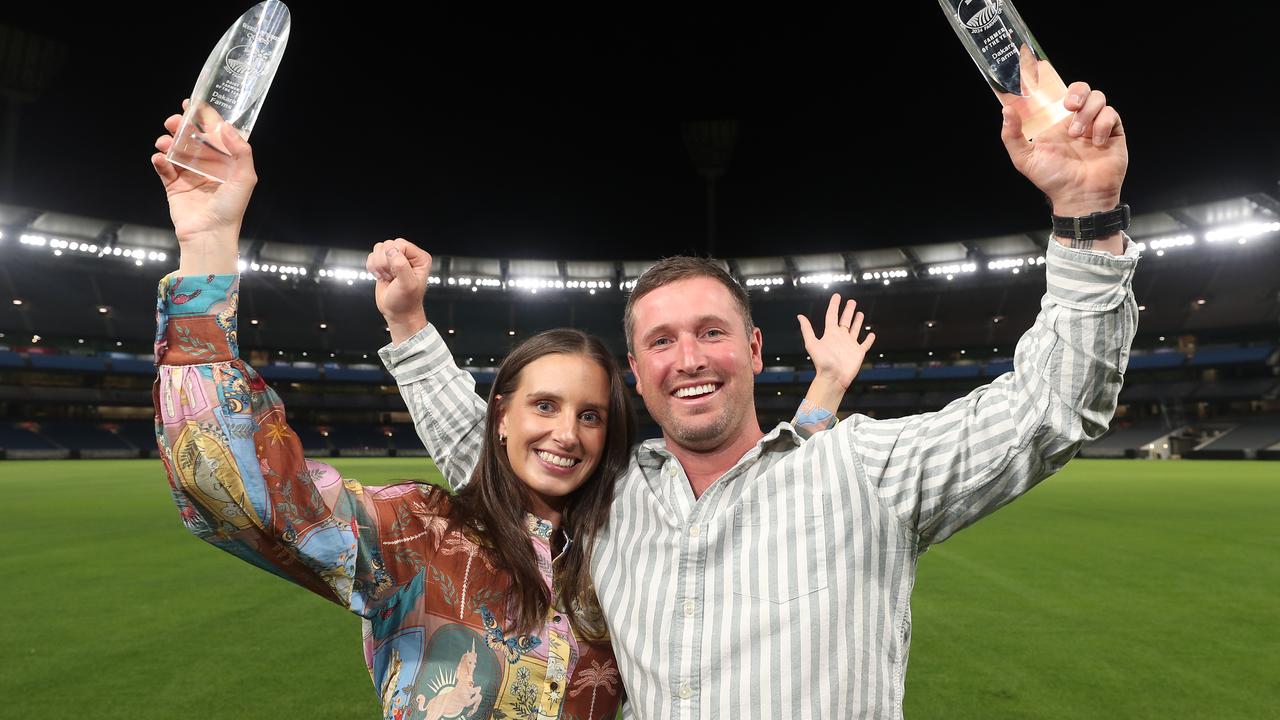Yarram Park stud at Willaura adds composite sheep to its Herefords
UPDATE: ONE of Victoria’s most renowned whiteface cattle breeders is becoming equally regarded for their sheep.

UPDATE: ONE of Victoria’s most renowned whiteface cattle breeders is becoming equally regarded for their sheep.
Antony and Sybil Baillieu, with their manager Jeremy Upton, run a large-scale commercial cattle and sheep operation across several Victorian and South Australian farms.
The business is centred on the historic Yarram Park — which at 9200ha is one of Victoria’s biggest stations — at Willaura in Victoria’s Western District.
Already recognised for its Hereford stud, Yarram Park has added another string to its bow with a composite terminal and maternal sheep stud.
“It’s a young stud really, we’ve been breeding the sheep for about 15 years but getting serious about the stud in the last four years,” Antony said.
He sees a bright future for the sheepmeat industry, particularly composites in high-rainfall areas.
Next Tuesday, Yarram Park Performance Rams will hold its second annual sale of 240 Lambplan-recorded rams at the Hamilton Showgrounds. A further 150 rams will be sold privately.
The Baillieus have owned Yarram Park since 1947. Mostly a grazing farm, with just 600ha in crop this year, it sits at the foot of the Grampians National Park and is staffed by seven employees.
The family also owns the 4800ha Broadlands at Lucindale, in South Australia, bought a decade ago, and the 1800ha Maranoa Downs at Naracoorte, which has been in Baillieu hands since the 1960s.
Further land is leased in South Australia. Broadlands was purchased from former managed investment scheme company Timbercorp.
Part of the property is planted to bluegums, now under lease to Australian Bluegum Plantations which bought the Timbercorp assets.
Antony said Broadlands, with its 685mm annual rainfall, “has always been regarded as a good piece of farming country”.
After the current tree crop is harvested ABP has the option to continue with a second rotation.
“The tree arrangement works well, but if ABP does not go again with another rotation, we will return the land to grazing,” he said.
In South Australia, the Baillieus run 1500 cows, 2500 dairy cattle on agistment and 2500 ewes.
Yarram Park itself hosts 16,000 ewes and 5000 ewe replacements. During spring, with lambs on the ground, sheep numbers peak at 40,000. It also stocks 2300 Hereford cattle.
The Baillieus sold their 3310ha Mt Elephant property at Derrinallum in 2010. “We sold half of the sheep from Mt Elephant and brought the rest, including all the stud ewes, up to Yarram Park,” Antony said.
At that time, Yarram Park began the historical move away from fine-wool Merinos and into crossbreds.
The property has rich roots in the wool industry and was the setting for Sir Arthur Streeton’s three versions of the classic painting Land of the Golden Fleece.
“This was always regarded as Merino country but crossbreds actually do much better; Merinos are harder work and need more labour, which is getting very dear,” Antony said.
“I love the wool industry, but it hasn’t been kind to the farming industry in the last 20 years,” he said. “You’ve got to make a decision, we’re happy with how the switch to meat is going now.
“I’m not saying crossbreds are always better than Merinos, but for this operation, we’ve chosen this path.”
Yarram Park now runs an all-ewe self-replacing composite flock.
“We aim to get trade lambs off before Christmas, targeting the trade market with a 19-20kg lamb,” Antony said, adding surplus ewe lambs are also available for sale.
The move into composites began 18 years when Antony was approached by New Zealander Dr Jock Allison to establish an Australian depot for an embryo-transfer program for East Friesians, using the Mt Elephant flock ewes as a base.
“They sold those lambs for very high prices for a few years, until the shine went off the ball,” Antony said.
“East Friesians have wonderful growth, fertility and milk, but their doing-ability in Australian conditions on a commercial basis is not good enough. But any great composite that is producing lots of lambs today has East Friesian breeding in its background.”
Originally the Mt Elephant composites were half Coopworth, a quarter East Friesians and a quarter Dorset.
“We have introduced Perendale genetics and replaced the Coopworths. Perendales are more suited for our conditions,” Antony said. “They bring doing-ability, are medium-sized and highly fertile.”
Antony said the commercial sheep flock was a vital testing ground for the stud genetics.
“We need the genetics to work commercial for us, and if they do, that is a basis we can continue to breed from in the stud,” he said.
“Having a large commercial base we consider vital for breeding stud sheep.”
Antony said the aim was to keep ram breeding as “simple as possible”.
“We’re not going to have a ‘cocktail’ of breeds; we’ll have a terminal line and a maternal line: that’s it,” he said. Antony was one of the first producers to run a large-scale composite flock in Victoria.
“The Border Leicester-Merino first-cross ewe is something people have identified with for a long time, but in the high-rainfall country we think a composite is more suitable.”
Yarram Park’s lambing percentage this year was 130-140 per cent, ewes mated to lambs weaned. Antony believes these percentages can be lifted.
But “above 180 per cent you get a lot of triplets, and in a commercial business you would get too many losses”.
For Antony, presenting rams for sale in paddock-condition was “vital”.
“This is in contrast with shedded, fed rams, presenting sheep like that doesn’t help the commercial man see what the sheep can do in his conditions.”
At Yarram Park, joining is in February and rams are left out for at least two cycles. Shearing is in May and lambing, July-August.
Lambs are sold over-the-hooks, from November, to the “person with the best price, we aim to have all lambs placed by Christmas”.
Antony said the sheepmeat industry has a “bright future”. And, he sees opportunities for Australian producers to step into markets now dominated by New Zealand, if that nation’s sheep numbers continue falling.
“The biggest problem we’ve got is the lack of abattoirs,” he said. “When we hit gluts, abattoirs fill up and there’s nowhere to go. Farmers have to accept falling values … we need more competition for product and killing space.”
“There are a few more abattoirs starting up — abattoirs are making a lot of money at the moment, which is fine but when you look at the percentage the farmer gets, in relation to the amount the abattoir and retailer gets, it has changed dramatically in 30 years.”
Yet, Antony said he is “optimistic” about the future of agriculture but said marketing could be improved.
He tips corporate farming will become more common and family farms will continue to play a major role. “Both parties will need to be better at what they do to remain profitable,” he said.
Looking forward, he believes now is the time for the sheep sector to consider merging MLA and Australian Wool Innovation.
“We have the wool industry and the meat industry — it should be the sheep industry. I think merging the two has merit and we need to have a good hard look at it,” he said.
Herefords
A strong advocate for the Hereford breed, Antony said he believed the beef industry would lift and have a very bright future “when we get a big rain”.
Looking back, he believes it took the Hereford and Poll Hereford breeders “far too long” to merge the horned and polled societies.
“The breed would be further ahead if that issue had been addressed earlier and quicker and more time could have been spent on concentrating on the more commercial areas,” he said.
“I’m disappointed where the Herefords have got to in relation to Angus, given that both British breeds have similar quality in growth and meat.”
But, one “very good” opportunity for Herefords was the current “swing to grassfed beef”.
“Converting grass to high quality meat is something the Herefords do very well”.


